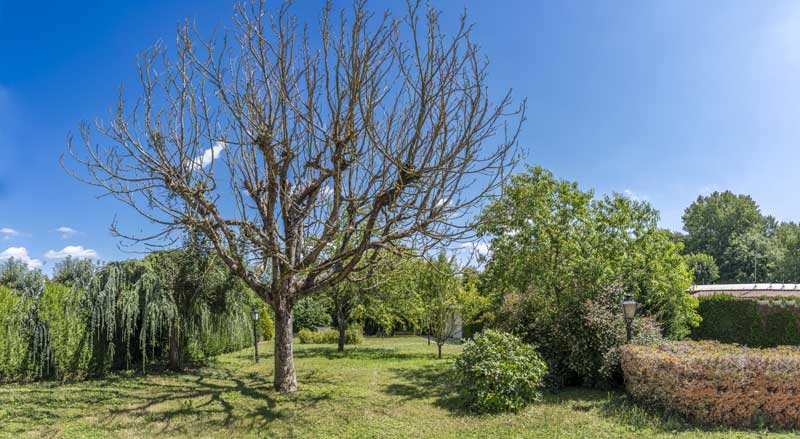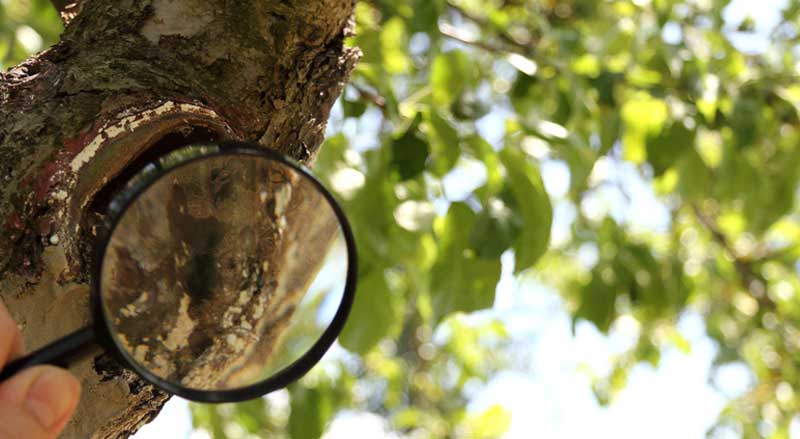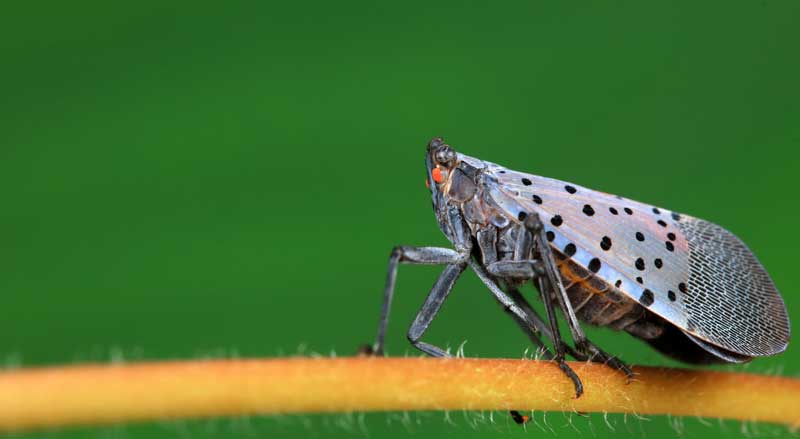Healthy trees are the foundation of a beautiful, thriving landscape. Unfortunately, New Jersey’s climate, soil conditions, and diverse tree population make our region especially vulnerable to a wide range of tree diseases and destructive pests. From fungal infections that spread quietly through the canopy to invasive insects that devastate entire species, the threats to your trees are very real—and often go unnoticed until it’s too late.
At Trees Unlimited NJ, we believe prevention, early detection, and expert treatment are the keys to protecting your landscape. In this guide, we’ll help you learn how to identify the warning signs of tree disease, explain the associated risks, and show you the proactive steps that can help save your investment.
Why Tree Health Matters
Trees provide shade, beauty, privacy, and long-term value to your property. But when disease or pests strike, they don’t just threaten the tree in question—they put your entire landscape at risk. Infected trees can become unstable, drop branches, or spread harmful pathogens to neighboring trees and shrubs.
The good news? With proper care and ongoing monitoring, most diseases can be managed or prevented altogether. Explore our Tree & Shrub Care services to see how routine maintenance builds stronger, more resilient trees.
Common Tree Diseases in New Jersey
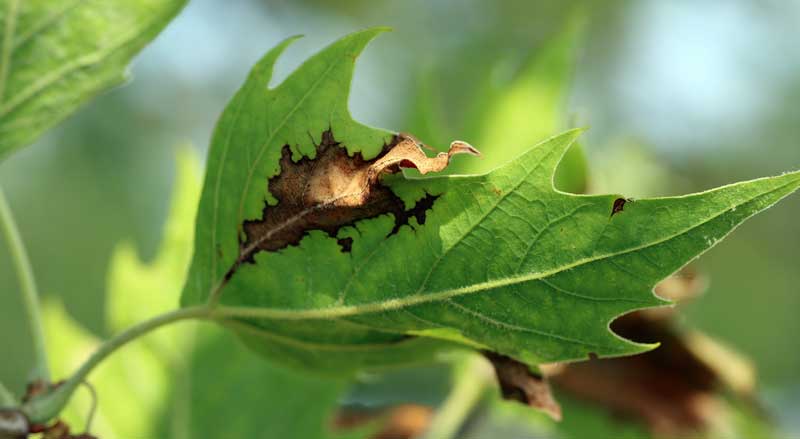
Anthracnose
A widespread fungal disease, anthracnose, causes irregular brown blotches on leaves, premature leaf drop, and dieback in twigs and branches. It’s especially common in sycamores, oaks, and maples. While it rarely kills trees outright, repeated infections can severely weaken them.
What to do: Sanitation (removing infected leaves and branches) helps, but professional fungicide applications may be necessary for high-value or repeatedly affected trees.
Beech Leaf Disease
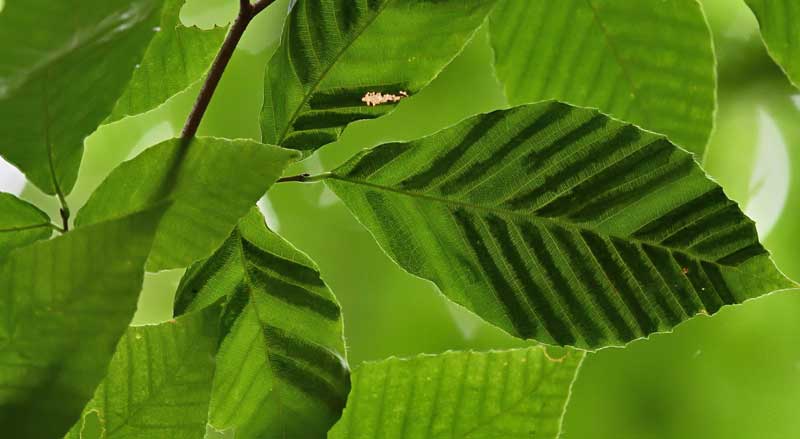
This relatively new threat has spread quickly through NJ. Our dedicated blog covers the details, but here’s what you should know: Beech Leaf Disease (BLD) distorts leaves, reduces photosynthesis, and ultimately kills both young and mature beech trees.
What to do: There is no single cure, but early intervention and ongoing treatments can help slow disease progression and enhance a tree’s resistance to decline. If you suspect your beech trees are affected, contact us immediately at 973-628-6869 for an inspection.
Dutch Elm Disease
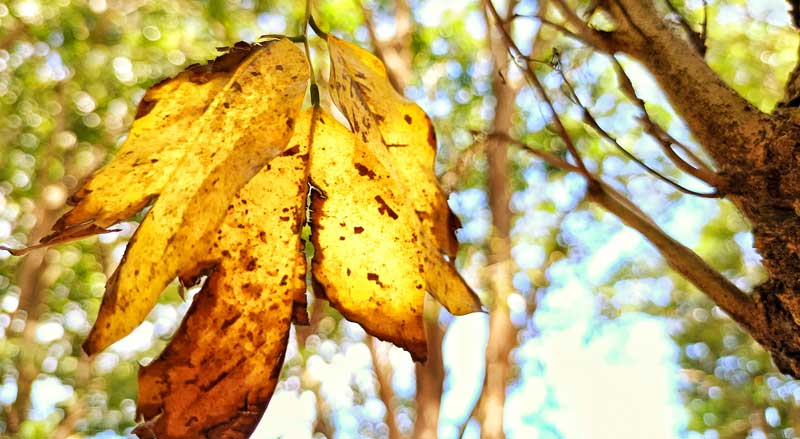
A devastating vascular disease spread by elm bark beetles, Dutch Elm Disease (DED) clogs a tree’s water transport system. Leaves wilt and turn yellow in summer, often on just one side of the tree at first. Without treatment, the entire tree can die in a single season.
What to do: Fungicidal injections and beetle management strategies are crucial for protecting surviving elms. Early detection makes all the difference.
Emerald Ash Borer (EAB)
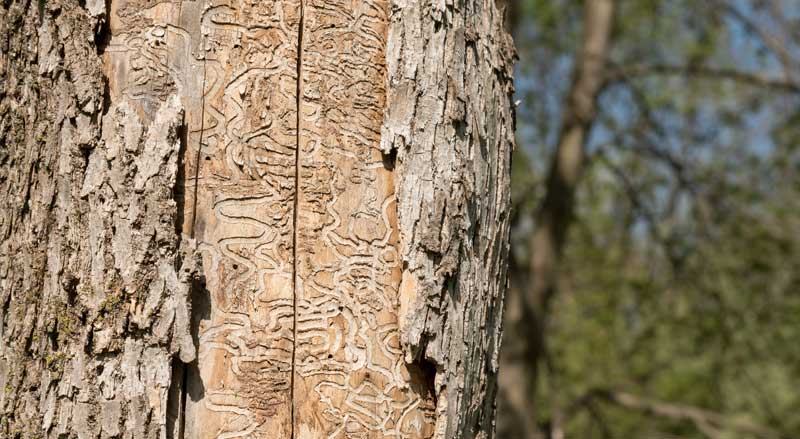
Though technically an insect, the Emerald Ash Borer is one of the deadliest threats to NJ trees. We’ve written extensively about EAB, but the key takeaway is this: once symptoms appear (D-shaped exit holes, canopy thinning, bark splitting), the infestation is already advanced.
What to do: Preventive treatments are critical. If you have ash trees on your property, schedule a professional evaluation now.
Apple Scab
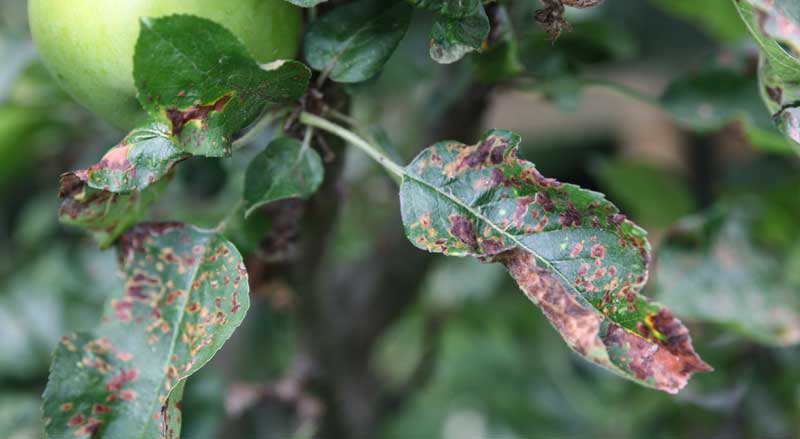
This fungal disease causes olive-green spots that darken into brown or black lesions on leaves and fruit. It weakens ornamental crabapples and apple trees, leading to premature defoliation and unsightly damage.
What to do: Proper pruning to improve air circulation, combined with fungicide applications, can reduce outbreaks.
Root Rot & Other Soil-Borne Fungi
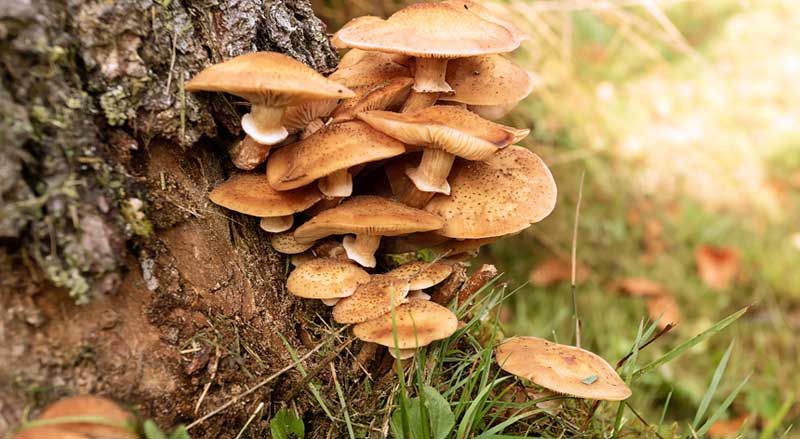
Excess moisture and compacted soils create perfect conditions for fungi like Armillaria, which attack tree roots. Symptoms often include stunted growth, leaf yellowing, and sudden dieback. Unfortunately, once root systems are heavily compromised, the risk of total failure rises dramatically.
What to do: Prevention is key. Proper watering, soil management, and root collar inspections by experts can help safeguard against these hidden killers.
The Overlap Between Disease & Pests
Many of the tree health challenges in NJ are linked to insect activity. For example, bark beetles spread Dutch Elm Disease, while the Emerald Ash Borer causes internal damage that mimics the symptoms of disease. That’s why we take a comprehensive approach that includes both Tree Disease Treatment & Prevention and Pest Management.
Ignoring one side of the equation leaves your trees vulnerable. Our integrated care ensures your property gets complete protection.
How to Spot Early Warning Signs
Homeowners often overlook the first indicators of trouble. Be alert for:
- Leaves with unusual spots, streaks, or curling
- Premature leaf drop in summer
- Sections of canopy thinning
- Cracks or oozing on the bark
- Wilting or discolored foliage on just one side of the tree
- Unusual insect activity
If you notice any of these symptoms, don’t wait. Schedule an on-site evaluation to prevent minor issues from becoming significant losses.
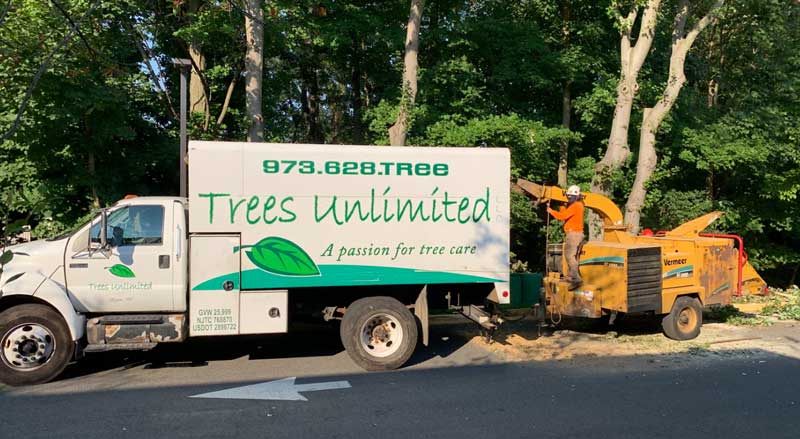
Why Choose Trees Unlimited NJ
For more than 40 years, we’ve provided expert tree care throughout Northern New Jersey. Our certified arborists and plant health care specialists use state-of-the-art techniques to diagnose, treat, and prevent disease. Unlike general landscapers, we focus exclusively on the science of trees and shrubs.
When you partner with us, you get:
- Comprehensive inspections with trained eyes that spot subtle symptoms.
- Preventive treatments tailored to local conditions and specific species.
- Eco-conscious solutions that protect your property without harming the environment.
- A dedicated team available year-round to safeguard your investment.
Protect Your Trees Today
Don’t wait until tree disease takes hold of your landscape. Whether you’re concerned about beech leaf disease, emerald ash borer, or unexplained canopy loss, our experts are ready to help.
📞 Call us today at 973-628-6869 or use our online contact form to schedule a consultation.
Your trees are too valuable to risk—let Trees Unlimited NJ be your trusted partner in tree health.

